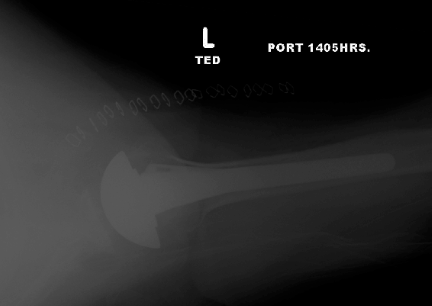 |
| Loss of cartilage from humeral head and inferior osteophytes |
 |
| Exposure of the glenoid |
 |
| After the drilling of the holes for the central and peripheral pegs of the all polyethylene glenoid component |
 |
| Implantation of the glenoid component |
 |
| Placement of 6 #2 Fiberwire sutures for the repair of the subscapularis back to the lesser tuberosity |
 |
| Implantation of the humeral stem and head |
 |
| Postopertive Grashey view showing the height and alignment of the prosthesis |
 |
| Axillary view |


